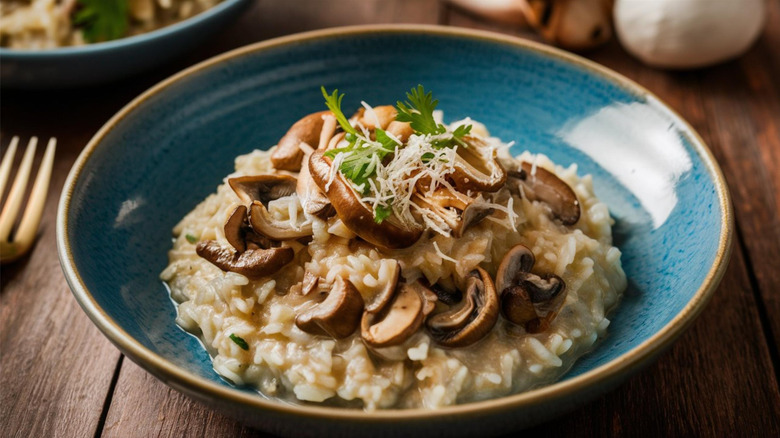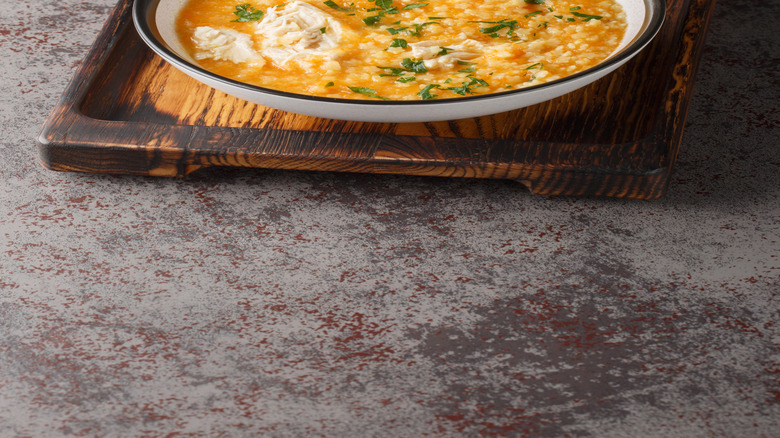What Makes Pastina Different From Risotto?
When we think of comfort foods, we think of tucking into cozy, hearty, stick-to-your-rib meals — and what would such fare be without two of its starring ingredients: pasta and rice? While two of these ingredients, risotto and pastina, both fall under the same broad umbrella of creamy, comforting dishes and can easily be confused, they are two distinctly different things.
The similarities are certainly there — both cook into soft, chewy dishes, both fare from Italian cuisine, and both are staples often found in the grain aisle at the grocery store, ideal for whipping up wholesome, warming dinners at home. But if you've ever confused risotto and pastina, wondering how, if at all, the similarly shaped, pearly, petite grain-like ingredients differ, the answer in the broadest terms is simple: one is a pasta, one is a grain.
Pastina is the catch-all term referring to a category of minuscule shapes of pasta noodles, usually under 2 millimeters in size, and made, as traditional pasta is, from wheat flour. On the other hand, risotto is a dish made from a specific type of rice, typically arborio, toasted and slowly cooked. This preparation method yields a particularly nutty flavor and a chewy almost gelatinous texture, unlike a basic stovetop steamed pot of white or brown rice, which has a more airy, separated texture. Beyond what pastina and rice are comprised of, there are other noteworthy differences relating to taste and flavor, texture, and their common uses in the kitchen, too.
Though similar in texture and country of origin, the two are used differently
Pastina, meaning "tiny or little pasta" in Italian, is perhaps the most comforting contribution to Italian cuisine. Though because of its mild, delicate flavor, it can be sprinkled into a wide range of soups or served as a plain pasta with sauce, it's most traditionally prepared as a soft, spoonable sick day comfort meal colloquially referred to as "Italian Penicillin." cooked and referred by Italian grandmother's everywhere as something of a cure-all for anyone under the weather or needing some spoonable healing properties, pastina simmered in broth and parmesan cheese is essentially the Italian version of chicken noodle soup. Whether prepared in this traditional fashion or used elsewhere, pastina has a subtle, unassuming flavor on its own, as most pasta does, and is usually cooked down to a very soft texture, versus al dente like risotto.
Though similar in appearance and another of Italian cuisine's most comforting contributions, risotto is always made from short-grain, starchy varieties of rice. To make perfect risotto, the key is to cook the grains very slowly, gradually adding water or broth until the grains plump up and swell, creating a rich, luscious bowl of rice that still maintains just a bit of a chewy, springy bite. Like pastina, risotto is a bit of a blank canvas and can be prepared with a range of veggies, cheeses, and spices. Risotto can even be made fully dairy-free for a so-decadent-you'd-swear-it-was-made-with-cream, plant-based meal.

